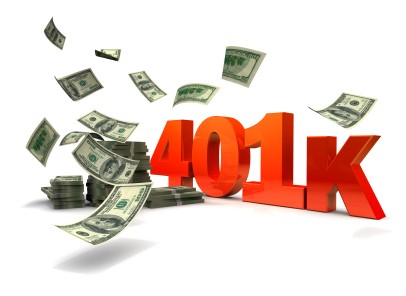The Ultimate Guide to Self Directed 401(k) Retirement Planning
Post on: 8 Март, 2017 No Comment

What is a Self Directed / Solo 401(k) Plan
A Self Directed 401(k) is a qualified retirement plan approved by the IRS. It follows the same rules and requirements as any other 401(k) plan – these rules being established in 1981. In 2001 the EGTRRA law was passed. This is commonly referred to as one of the two “Bush Tax Cuts”. This act made significant changes to the IRS code lowering taxes for qualified plans such as a personal 401(k) plan.
The participants of the plan have complete flexibility to invest in anything they wish – as long as they are legal.They simply write a check and make their investments – they are not confined or stifled as most people are with their traditional brokerage retirement accounts.
Self directed 401(k)’s are perfect for self-employed consultants, contractors, sole proprietors etc. They allow for spouses to be plan members and eliminate the need for a custodian (as required with an IRA).
What Rules Affect a Self Directed 401(k)?
There are two main rules and in many situations they go hand in hand.
Prohibited Transactions – a self directed 401(k) cannot invest in collectibles such as rugs, works of art, automobiles etc.
Disqualified Persons – these are persons the plan is forbidden to “do business with”. A more detailed list can be found on site.
We encourage our clients to contact us if they have any suspicions their actions might violate these rules.
Investments in Self Directed 401(k)
A Solo 401(k) can invest in almost anything. Examples are: Real Estate – residential or commercial – rentals, foreclosures raw land, Tax Liens, Precious Metals, Private Placements, Foreign Currency, Hard Money Lending etc.
Prohibited Transactions Rules
In a twist, the IRS does NOT describe what a Solo 401(k) plan can invest in, only what it CANNOT invest in.
Disqualified Persons
A disqualified person by virtue of IRS 4975(e)(2) is generally described as follows:
A person providing services to the Plan (a trustee etc.)
A person providing fiduciary services (someone who has authority to make investment decisions for the plan
Family members – parents, grandparents, children, grandchildren, spouses children or grandchildren. Parents-in-law, brothers, sisters, cousins, aunts or uncles, step-bothers or stepsisters and friends are not treated as disqualified persons.
There are other disqualified considerations, we ask you to call if you are unsure.
Prohibited Transactions
Under IRS rules, a Solo 401(k) is prohibited from certain types of investments or transactions. Some examples are:
Engaging in a Transaction with a Disqualified Person
Plan participant buys a condo and lets daughter live there
Plan participant buys part of business owned by his Father
Direct or Indirect Lending of Money
Plan participant loans money to his wife or son
Father signs a loan guarantee for the Solo 401(k) Plan
Receiving Direct or Indirect Benefits of the Plan
Plan participant buys property and charges a management fee
Plan participant “fixes” a property himself rather than paying a 3rd non-disqualified party.
A Solo 401(k) can invest in shares of a C Corp but the rules of an S Corp prohibit a Solo 401(k) from the purchase of shares.
Real Estate
Yes – it is one of the most popular investment choices. Real Estate is an asset class just like stocks and bonds. However most financial institutions do not allow for real estate investments. They have their “advisors” who must restrict their advice to “their products.”
Buying Real Estate with Self Directed 401(K)
It really isn’t complicated. When we establish a new Self Directed 401(k) plan, we assist the client to transfer or rollover qualified funds into the new plan. The new plan will have a checking account. When an R E opportunity arises, the client simply writes a check and the title company titles the property in the name of the 401(k). The client will also write a check for any ancillary fees or “fix up” expenses. If the purchase is a long-term hold, the tenant will pay the rent directly to the 401(k) plan. When the property is sold, the title company will send the profit to the 401(k) plan. The client, acting as trustee of the plan, makes all the decisions for the plan. With a Self Directed 401(k) plan vs. a Self Directed IRA, there isn’t the need for a custodian. Therefore the client (trustee) doesn’t have to submit paperwork or ask permission. He simply makes the decision and writes the check.
Of course we are always a call or email away to answer any questions our clients have during the purchasing processes.
Setting Up a Self Directed 401(k)
At Self Directed Retirement Plans LLC we have a system, which is efficient, cost effective and a pleasant experience for our clients. Our client’s experience hands on assistance and guidance. We know this is a big step for most, even scary because most financial advisors or CPA’s are not familiar with Self Directed 401(k)’s. Consequently the advice they give is not correct. We have been creating these plans for almost ten years and our clients are thankful for that experience.
Pros and Cons of a Self Directed 401(k)
This is a valid question and one we are asked quite often. The pros of course are the ability to have total checkbook control of your plan and take immediate action when an investment becomes available. The con would simply be – the client is now the decision maker. We are pro-active with our clients – encouraging them to contact us about all facets of their new plan.

Self Directed Facts and “Secrets”
Facts Ten thousand Americans are turning 60 EVERY day. They are better educated, have gone through at lease two severe downturns in the “market” and are looking for help to have more “control”.
Less than one percent of CPA’s are familiar and comfortable enough to discuss self directed 401(k)’s and their intricacies .
Most financial advisors are bound by rules their employers place on them. In most cases this means they can only “advise” their clients to purchase products their employers sell. Self Directed 401(k)’s generally are not on that list.
Secrets – Mr. and Mrs. Smith work 9-5 and contribute to their respective company 401(k) plans. Mr. Smith has part time self-employment income. Mr. and Mrs. Smith are eligible for their own personal self directed 401(k) plan. BOTH can now transfer former qualified funds into the personal plan. This immediately creates a much larger investment pool vs. two separate ira’s AND these funds can be co-invested.
Funding Self Directed 401(k)’s
Transfers, personal deferrals (contributions) and profit sharing are the main funding sources.
Transfers an individual can transfer previous 401(k) funds, SEP IRA funds, SIMPLE IRA funds, and Traditional IRA funds – in fact any previous “qualified” funds. Roth IRA funds cannot be transferred.
Contributions – personal deferrals are determined by age. If a client is under 50, they can have a personal deferral of 100% of their self-employed income up to $17,000. Over 50 this limit increases to $22,500.
Profit Sharing – the self directed 401(k) plans we establish are also psp’s or profit sharing plans. The IRS publication 560 establishes the amount of profit sharing allowed and includes a step-by-step worksheet. In general terms the profit sharing can be up to 25% of the sponsoring entitie’s profit.
Contributions to The Plan
Limits Annual contributions are completely discretionary and consist of two factors or parts – Personal Deferral and Profit Sharing.
Personal Deferral – Under the age of 50 is $17,000 and $22,500 if you turn 50 in any part of the year. This can be pre-tax (Traditional) or an after-tax (Roth) contribution.
Profit Sharing – the business can make a profit sharing contribution between 20% and 25% depending upon the type of business.
Total Limits For participants under the age of 50 a combined contribution of $50,000 and over the age of 50 $55,500. IMP – if both spouses participate in the sponsoring business and earn compensation the total contribution can be up to $100,000 or $111,000. Very compelling reasons to have a self directed 401(k).
Roth Contributions – Built into the Solo 401(k) is a Roth sub account. This allows high earning plan participants to elect a Roth contribution. High income earners are prohibited from contributing to a Roth IRA or converting a Traditional IRA to a Roth IRA. Coupled with the higher contribution levels, Solo 401(k)’s allow high income earners to enter the Roth arena.
Self Directed 401(k) Loans
Personal Loans The Solo 401(k) allows plan participants to borrow personally from the plan.The participant can borrow up to 50% of their account value or $50,000 – whichever is less. This low interest loan can be used for any purpose.
Checkbook Control Facilities
With a Solo 401(k), all assets of the plan are under the control of the plan participant(s). You act as trustee of the plan, eliminating the need for a bank or trust company to serve as a trustee. As trustee you can establish a Solo 401(k) trust account at any local bank or credit union. This gives the plan checkbook control enabling you to act decisively and quickly when an investment opportunity presents itself.














